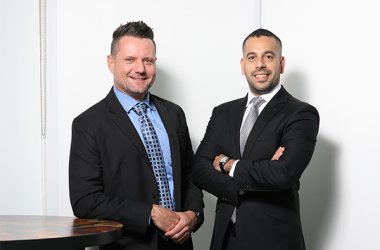
Hewlett-Packard sees businesses in the future adopting touchscreens, but the technology needs further development to be an alternative to keyboards and mice in corporate environments, a company executive said.
Touch is a natural way for humans to interact with PCs, and businesses are experimenting with the technology to see how it can be used, said John Cook, vice president of marketing at HP’s consumer PC global business unit. HP ships PCs with touchscreens where fingers can be used as an alternative to mice to zoom into maps, scroll through documents or manipulate images.
Touchscreens could be used for engineering and design applications where higher levels of precision are required when manipulating images, Cook said. Touchscreens could also be relevant for database tasks, where screens can be touched to retrieve data without typing or clicking a mouse multiple times.
For example, customer support agents could quickly retrieve names, addresses and other customer data by just tapping the screen a few times. However, there is room to improve software designs and user interfaces to effectively exploit touchscreens, especially for databases, Cook said.
"I don’t think anybody has cracked that code yet. But somebody will come up and figure out a way to give me the most access to the most information," Cook said.
A strong software ecosystem is emerging for businesses to adopt touch PCs, and Cook is encouraged with Microsoft’s upcoming Windows 7 OS, which builds in native support for touch capabilities. The native capabilities could expand the use of touchscreens and encourage developers to focus software design around touch. For its part, HP is developing a software ecosystem through which it provides tools and support for developers to write touch-enabled programs.
Touch is a new interface that is more convenient for some tasks, for example being able to run through a data list or a set of icons or thumbnails, said Roger Kay, president of Endpoint Technologies Associates. Seeing the edge of the data set with a visual bounce at the end of a running gesture is handy.
"Since business is all about time savings and efficiency, anything that increases productivity is a useful tool," Kay said.
Beyond software, designing touch hardware to meet business needs is key to adoption, Cook said. Keyboards and mice remain better for writing huge reports, but HP is monitoring how businesses find new uses for touchscreens, Cook said.
"Sometimes what happens is usage develops, and our design evolves around it," Cook said. "If it’s there and it can more efficiently replace the mouse or keyboard, then do it. If it doesn’t, then don’t try to force fit it."
HP has already seen innovative business uses for touchscreens. A bakery in California uses HP’s all-in-one Touchsmart PC to take and record orders. Similarly touchscreen PCs could be the "cash register of the future," Wolff said.
Hospitals could be attracted to touch PCs because of the ability to manipulate data with fingers. Touchscreens could be placed as secure workstations on walls or desks for nurses or doctors to quickly retrieve patient information. Touch PCs also lend themselves to educational environments as kids interact better with touchscreens than mice or keyboards.
Hewlett-Packard exec says touchscreens face some software challenges





